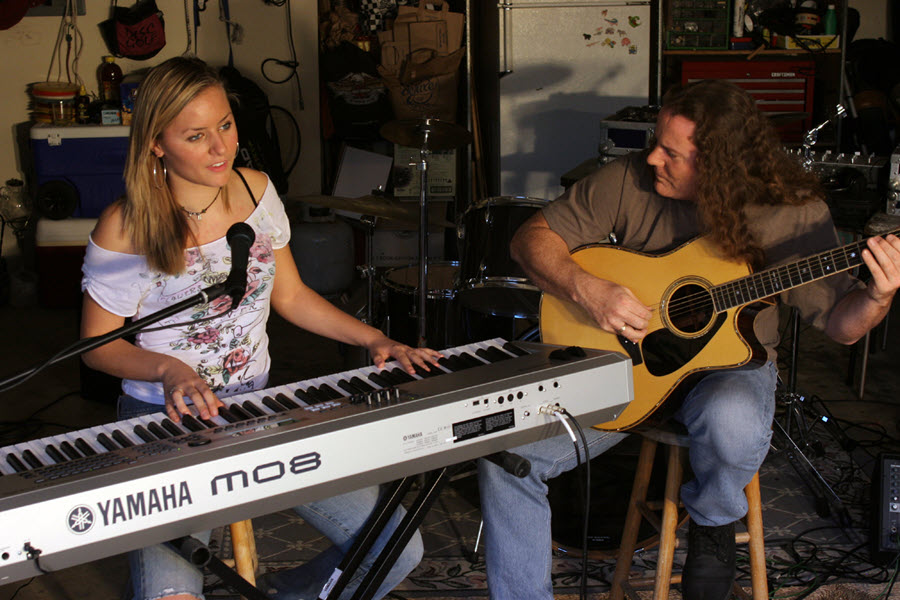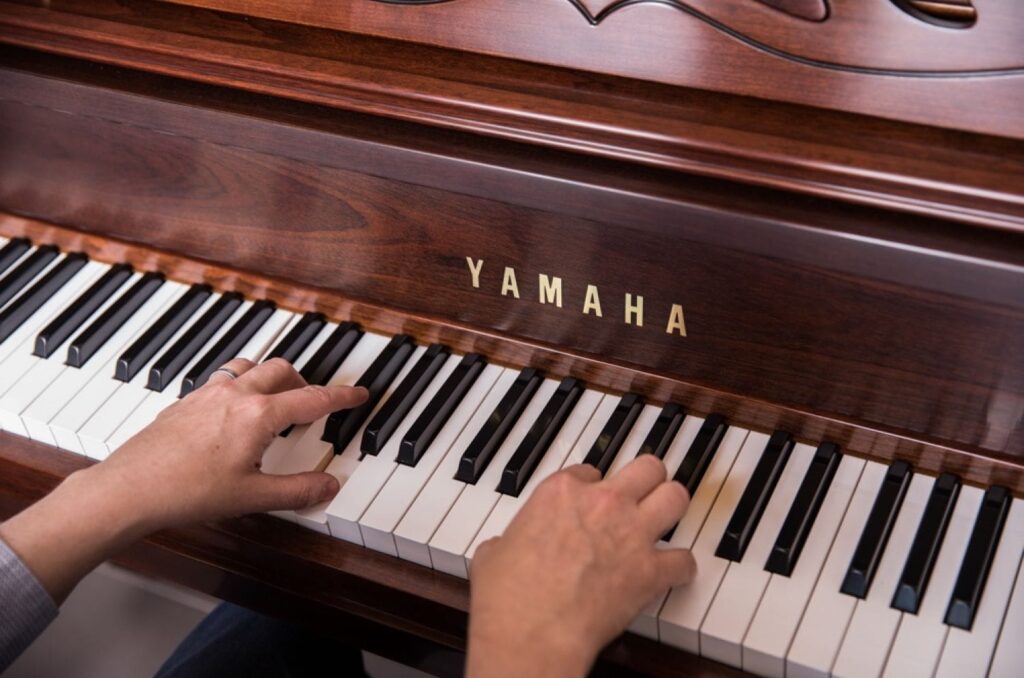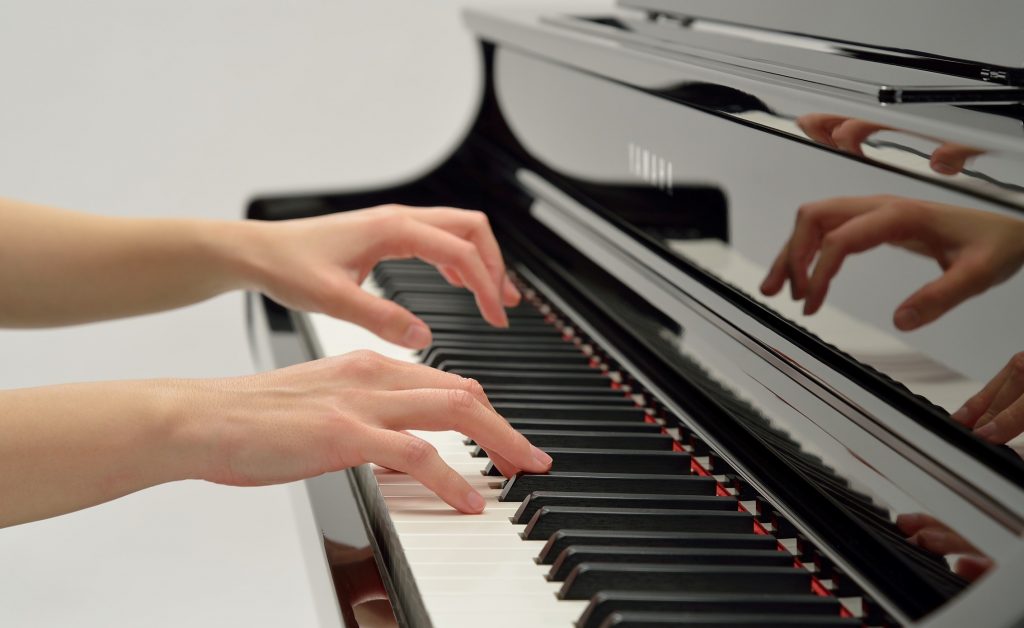Tagged Under:
10 Great Arpeggios for Left and Right Hand
Add these colorful and unique runs to your playing vocabulary.
Arpeggios (broken chords—that is, chords played one note at a time) are great devices to use as an accompaniment for a singer, or as runs between the main melodic phrases of a tune. Everyone who takes piano lessons learns how to play them, but usually in a pretty basic fashion that’s kind of predictable and lacking color.
In this article, we’ll explore ten ways of making arpeggios more interesting.
1. Use Both Hands
You can add excitement (and a nice touch of showmanship) by using both of your hands to play arpeggios, alternating from the left hand to the right hand as you go up (and back down) the keyboard. This is pretty easy for even beginners to execute, and looks cool as well.
As an example, here’s a basic C Major arpeggio, played up and down the keyboard across four octaves:

The notes are played as eight-notes (two notes to the beat), but I have notated the stems/beams in groups that show which hand plays which notes. Stems that go down are played by your left hand, and stems that go up are played by the right hand.
After you play the first three notes and move into the notes to be played by your right hand, start to move your left hand over your right to get into position for the notes starting on beat 4 of the first measure. Continue to alternate your hands in these three note groupings. Notice that when you get to the top C on beat 3 of the second measure I indicate that you should use the 2nd finger of your left hand, but for that note only: you return to using the right hand for the following three notes.
Here’s another way to execute this top of the phrase:

With this technique, you change your fingering slightly in bar 2 so you can play the whole phrase with your right hand, avoiding the extra crossover.
You should practice this until you get all the notes sounding smooth and are able to alternate your hands with ease. Try it with different rhythmic groupings as well — for example, triplets (three notes to the beat):

Then take it up a notch by arpeggiating sixteenth notes (four notes to the beat):

Be sure to explore this in all 12 keys, and to try other chord qualities too, such as a minor triad:

We’ll be applying this two-handed method to the other nine arpeggios in this article as well.
2. Repeat Ranges
It sounds really nice to repeat part of the range you play, rather than just going straight up and down the keyboard. The next example illustrates how this works. Here, the left hand goes back over the same notes the right hand just played when ascending, and the right hand repeats what the left hand played on the descent. Note: In this, and all the following audio examples, I’ll first play the arpeggio slowly (with a metronome click for reference), then repeated at a much faster tempo, without the metronome.

Here’s the same approach using a minor triad:

3. Add Color Tones
Arpeggios become much more interesting when you add some notes that go beyond the basic root, third and fifth of a triad. Here’s an example where the right hand swaps out the root for the second (a D) — a simple change that sounds very pleasing to the ear.

This also works well when applied to a minor chord:

4. Add A Sixth
In a similar vein, try adding a sixth to your arpeggios, like this one, applied to a major chord:

Here it is on the equivalent minor chord:

5. Combine Both The Second And The Sixth
Commonly called a 6/9 chord (we call the second a ninth if there are tones from the sixth or higher present in the chord), this lends itself especially well to arpeggiation. Here it is applied to a major chord:

And here’s the minor 6/9:

6. Extend the Range Of Your Notes
Extending the intervals between your notes beyond the stacked thirds of a triad gives your arpeggios a more expansive sound. Likewise, not always playing the triads as root position chords can enrichen your playing. Here’s a great way to approach the added second arpeggio we explored earlier:

The left hand shape goes from the root up to the fifth, skipping the third (for now), and then goes on to the added second note. This open sound is more modern than the typical root position triad. Next, the right hand plays a C triad, but in its first inversion, where the notes have been rearranged to be third, fifth, and then root. This will take some practice to get comfortable, since both hands have to stretch a bit further.
This approach also works well using a minor chord quality:

7. Move Away From Typical Triad Shapes
We’ve kind of been saying this all along, but it bears repeating: try to steer clear of playing typical triad shapes wherever possible, as in this example. As you can hear, especially when played fast, the results can be pretty spectacular.

8. Combine Different Triads
As you start to explore 6th and 7th chords you can create good voicings and arpeggio patterns by stacking two different triads together. For example, if you combine both a C and G triad you get a C Major 9th chord, which also includes the major 7th. In this next example, these are the triad shapes we’ll be using:
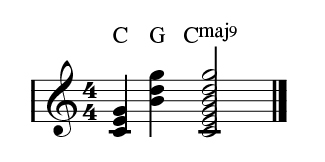
Now we’ll incorporate both triads into a two-handed arpeggio pattern, like this:

Here’s a variation, using the 2nd inversion of the G Major triad:

9. Combine a Minor Triad With a Major Triad
Stacking a major triad on top of a minor triad — especially if you add the 7th, 9th and 11th — delivers a really rich sound. For example, here’s a B-flat Major triad on top of a C minor triad, with those extra notes added:
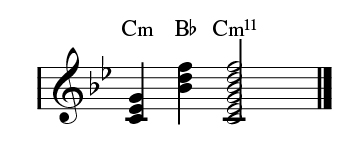
Here are both triads arpeggiated in their root positions to sound the minor 11th chord:
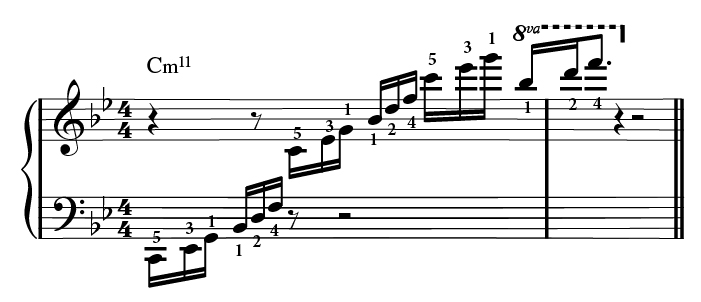
This time we’re only playing it up as a sweep and then letting it ring: you don’t have to play your arpeggios up and down all the time. In fact, when using them as runs it’s often better to simply play them either up or down; that way, it doesn’t sound so much like an exercise.
10. Combine Complex Chords
Lastly, you can combine complex chords to create very effective arpeggios. This example stacks a C dominant 7th chord in the left hand and an A Major triad in the right to create a very jazzy sound.

When we arpeggiate it, we’ll leave out the G (the 5th) in the left hand so there’s a better balance of notes per hand:

And here’s that same arpeggio as just a simple run going up:
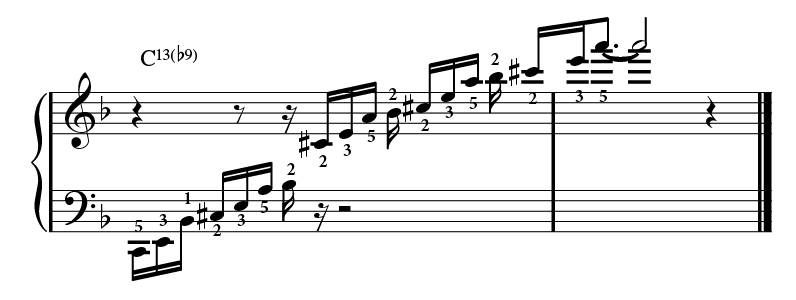
Notice that I left some notes out of the left hand after the first beat, reducing it to a single B-flat each time. This makes the arpeggio not only simpler, but faster to climb up — perfect for a flashy run after playing a chord voicing.
All audio played on a Yamaha P-515
Check out our other Well-Rounded Keyboardist postings.
Click here for more information about Yamaha keyboard instruments.











